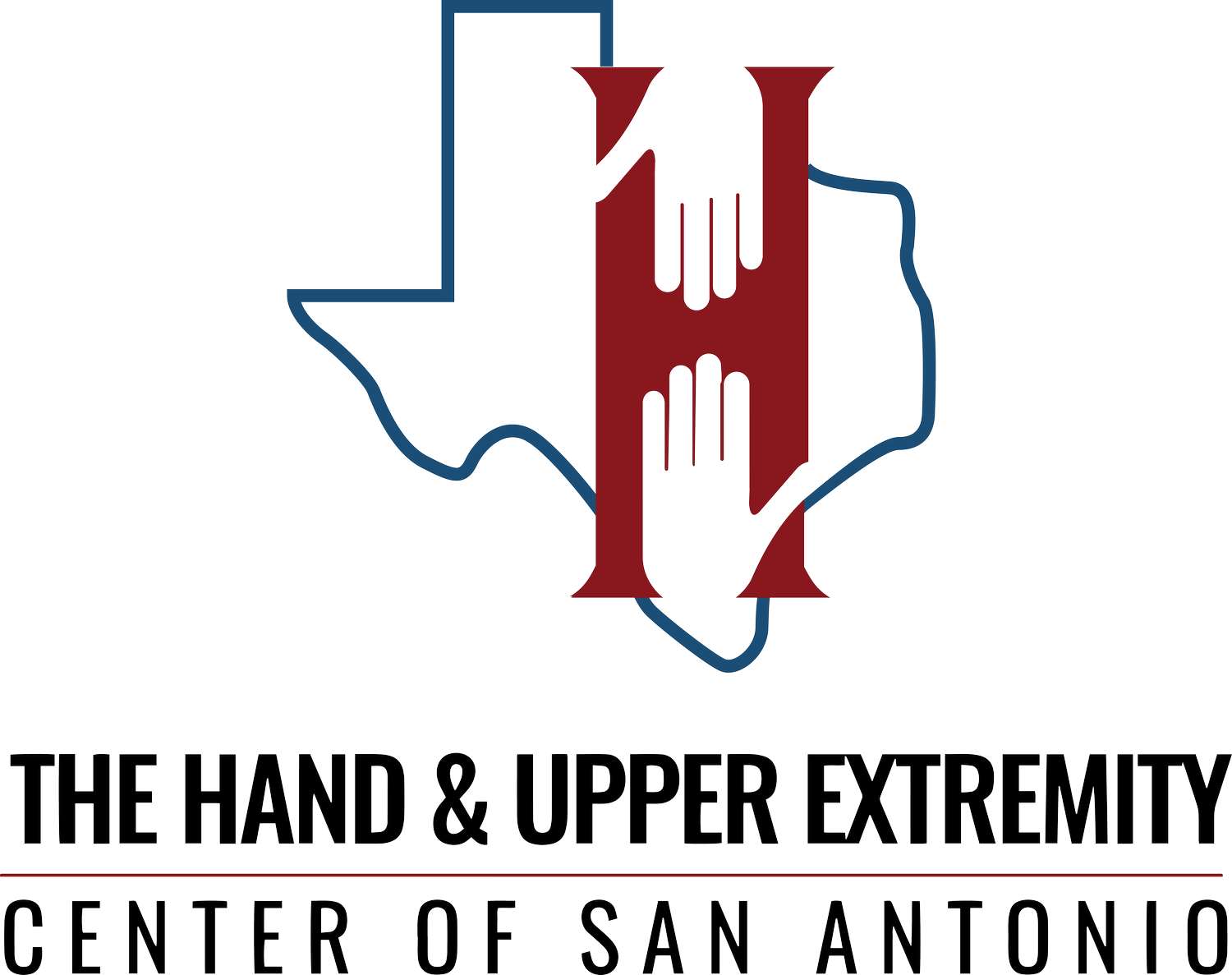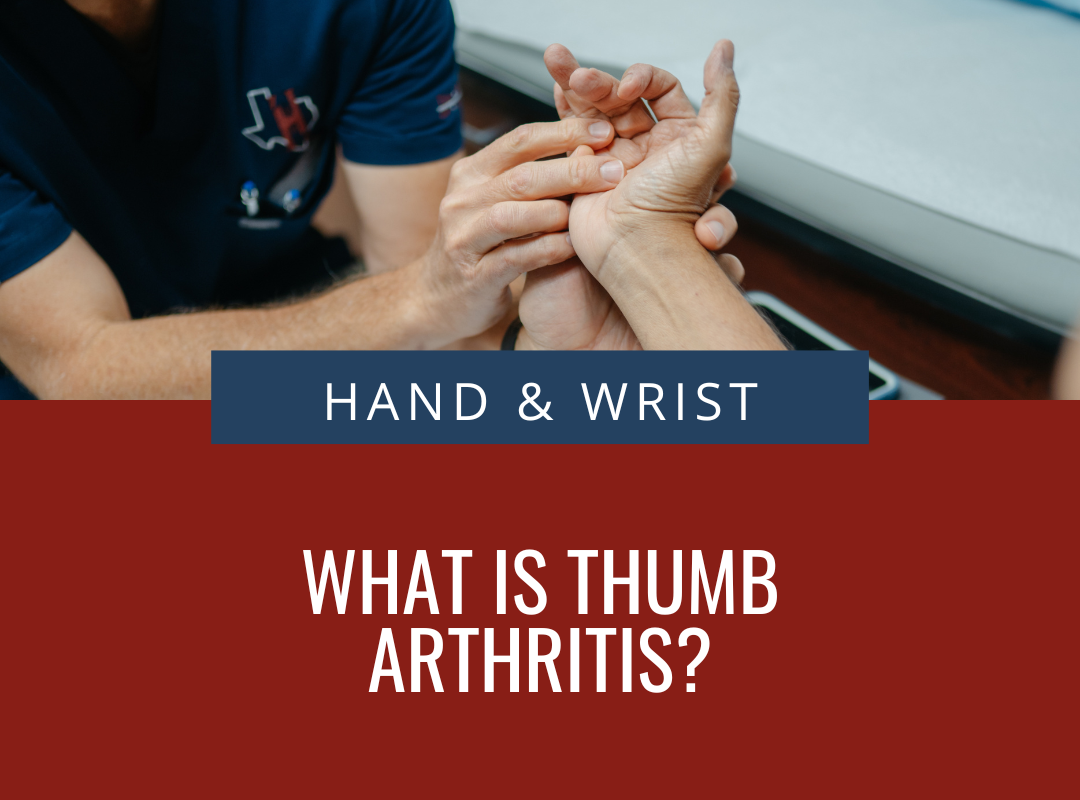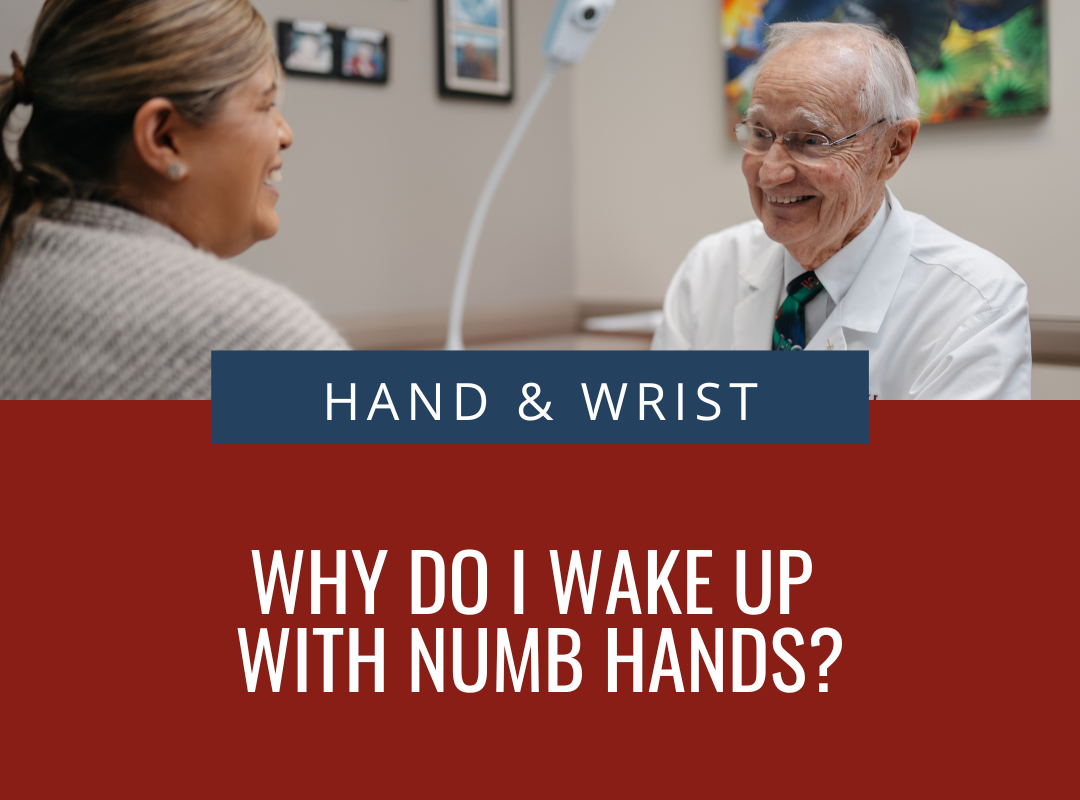
Dupuytren Contracture Treatment in San Antonio
What Is Dupuytren contracture?
Dupuytren Contracture is a progressive hand condition that causes the tissue under the skin of the palm (called the palmar fascia) to thicken and tighten. Over time, this tissue can form firm nodules and rope-like cords that pull one or more fingers, often the ring and little finger, toward the palm.
The condition usually develops slowly and may not cause pain, but as it progresses, it can interfere with simple movements like shaking hands, grasping objects, or laying your hand flat on a table.
Causes of Dupuytren Contracture in the Hand
The exact causes of Dupuytren contracture aren’t fully understood, but research shows that genetics plays the biggest role. Up to 70% of people with this condition have a family history of it. The condition is inherited in an autosomal dominant pattern, meaning it can pass down from just one parent.
Several other factors can increase your risk, including:
Age and gender: Most people develop Dupuytren contracture after age 40, and men are affected three to seven times more often than women.
Ancestry: It’s more common in people of Northern European or Scandinavian descent.
Health conditions: Diabetes, liver disease, epilepsy, HIV, and seizure disorders have been linked to higher risk.
Lifestyle factors: Smoking and heavy alcohol use can contribute by reducing blood flow and oxygen to hand tissues.
While repetitive hand use doesn’t directly cause Dupuytren contracture, it can make symptoms more noticeable in those who already have it.
Common Symptoms of Dupuytren Contracture in the Hand
-
A small lump or hard bump in the palm
-
Thick cords that can be felt under the skin
-
Fingers (especially the ring and pinky) that slowly bend toward the palm
-
Trouble laying your hand flat or straightening your fingers
The condition most often affects the joints at the base and middle of the fingers. While it’s usually painless, it can make daily activities, like putting on gloves or gripping objects, more challenging.
Some people with Dupuytren contracture may also develop similar tissue thickening on the feet (called Ledderhose disease) or penis (Peyronie’s disease).
Experiencing symptoms of Dupuytren contracture in your hand? At The Hand & Upper Extremity Center of San Antonio, our expert hand specialists provide advanced diagnosis and personalized treatments specifically designed for hand nerve injuries. With our specialized approach and individualized care plans, we'll help you restore sensation, strength, and movement in your hand.
Your Treatment Options for Dupuytren Contracture
There is no permanent cure for Dupuytren contracture, but modern Dupuytren contracture treatment options can significantly improve movement and function. The best approach depends on the severity of your condition and how much it affects your daily life.
Non-Surgical and Minimally Invasive Options
Needle Aponeurotomy: A fine needle is used to gently release the tight cord through the skin, allowing the finger to straighten. This procedure is done under local anesthesia and has a short recovery time.
Collagenase Injection (Xiaflex®): An enzyme is injected into the cord to dissolve it. A follow-up appointment helps extend the finger once the tissue softens.
Steroid Injections: For early-stage nodules, corticosteroids can reduce inflammation and slow progression.
These treatments typically have minimal downtime but may need to be repeated over time, as recurrence is common.
Surgical Options
For more advanced contractures, surgery may provide the best long-term results:
Limited Fasciectomy: The most common surgical treatment, where diseased tissue is carefully removed to release the tightened fingers.
Dermofasciectomy: For severe or recurring cases, both the thickened tissue and affected skin are removed, and a skin graft is placed to restore mobility.
While surgery carries some risks, such as stiffness or nerve injury, it offers a higher chance of lasting improvement. After any procedure, hand therapy is essential to regain flexibility and strength.
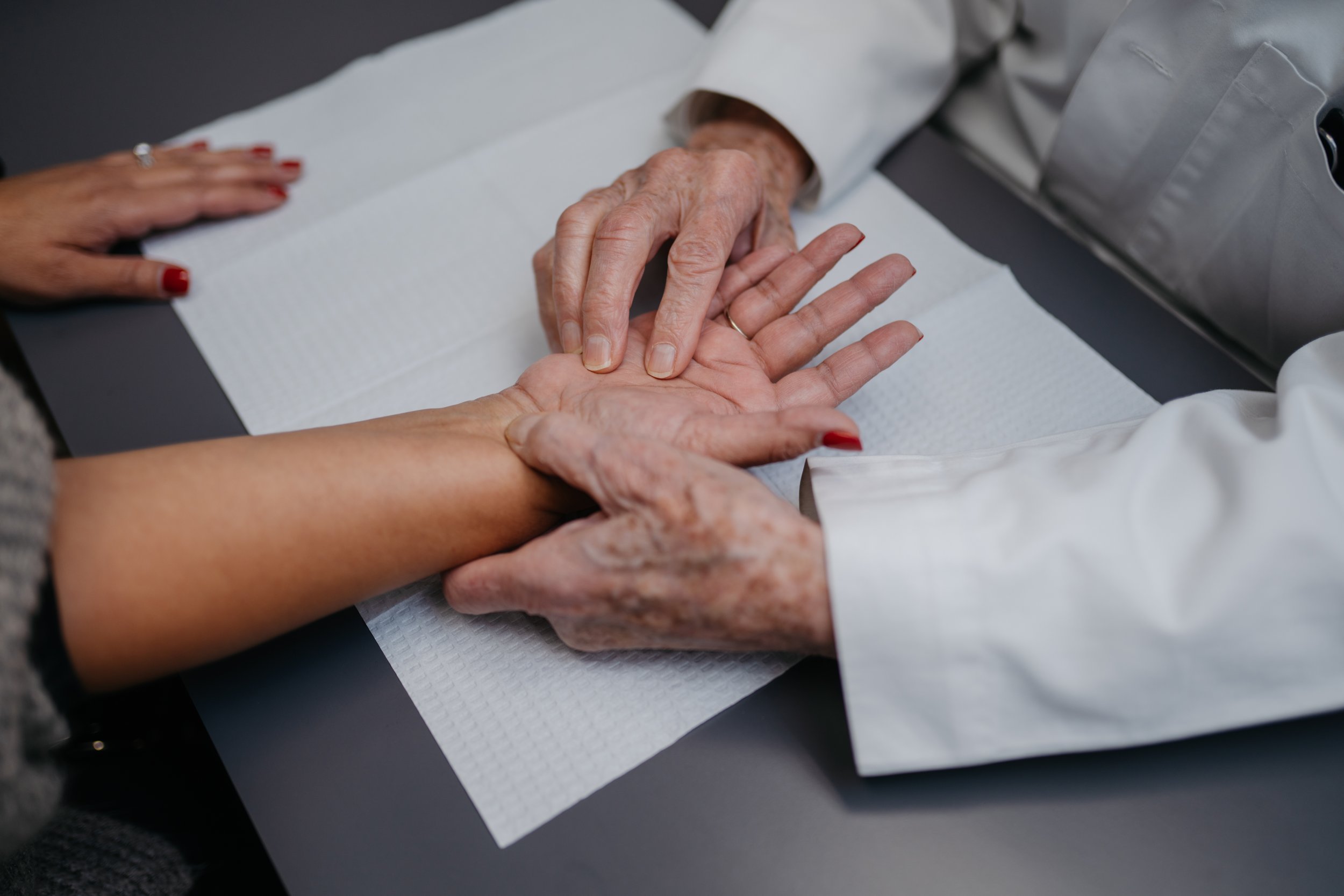
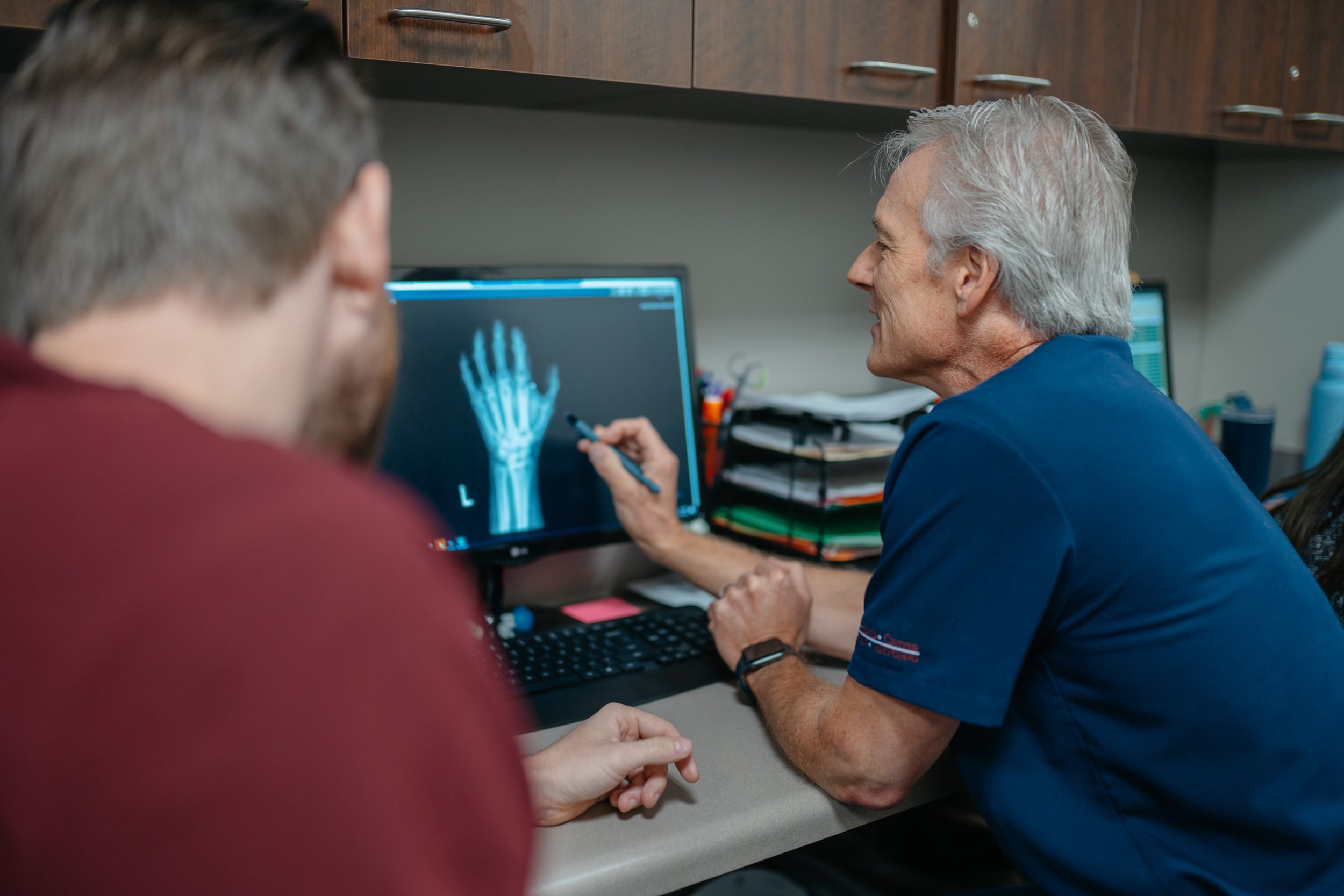
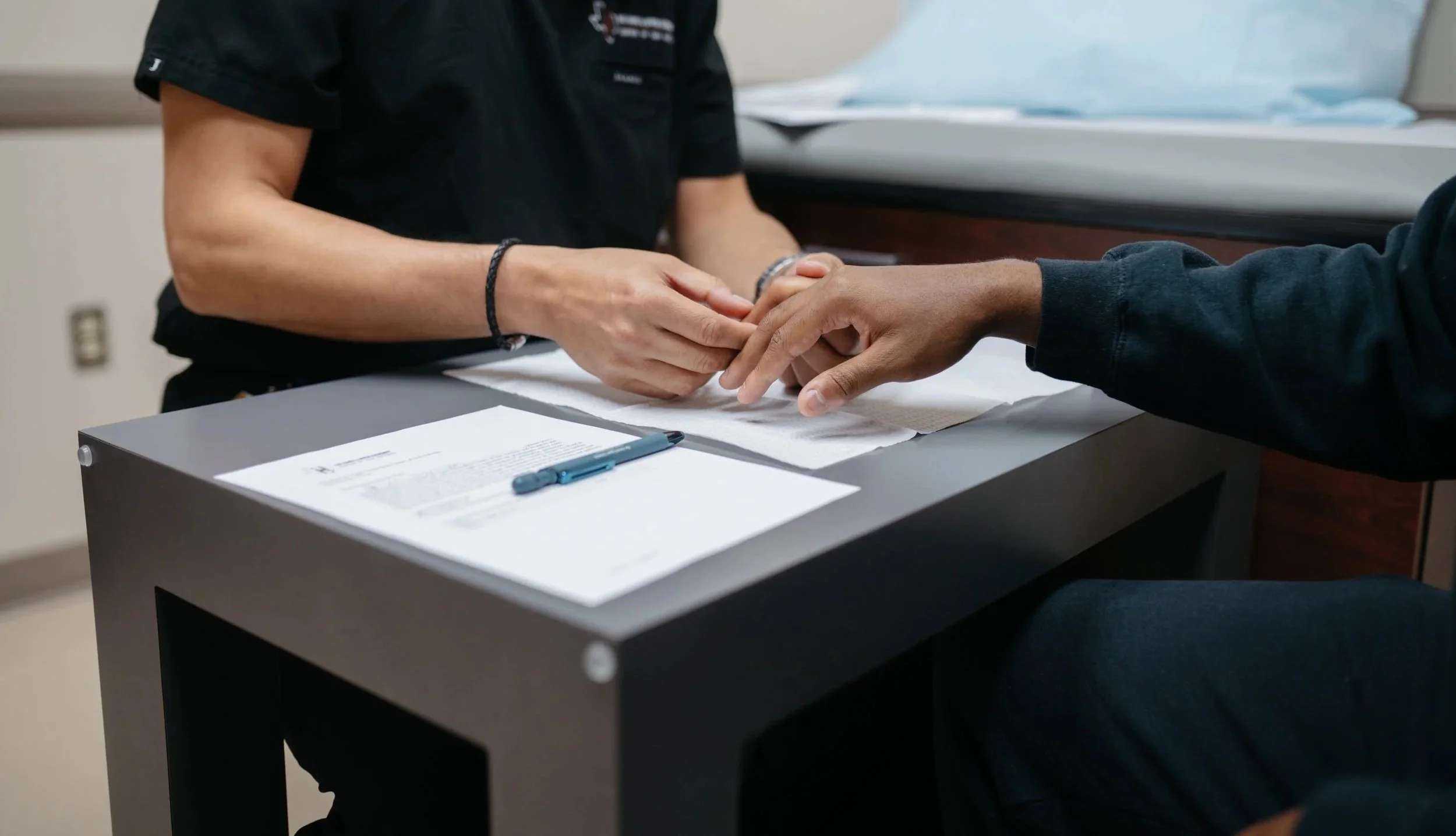
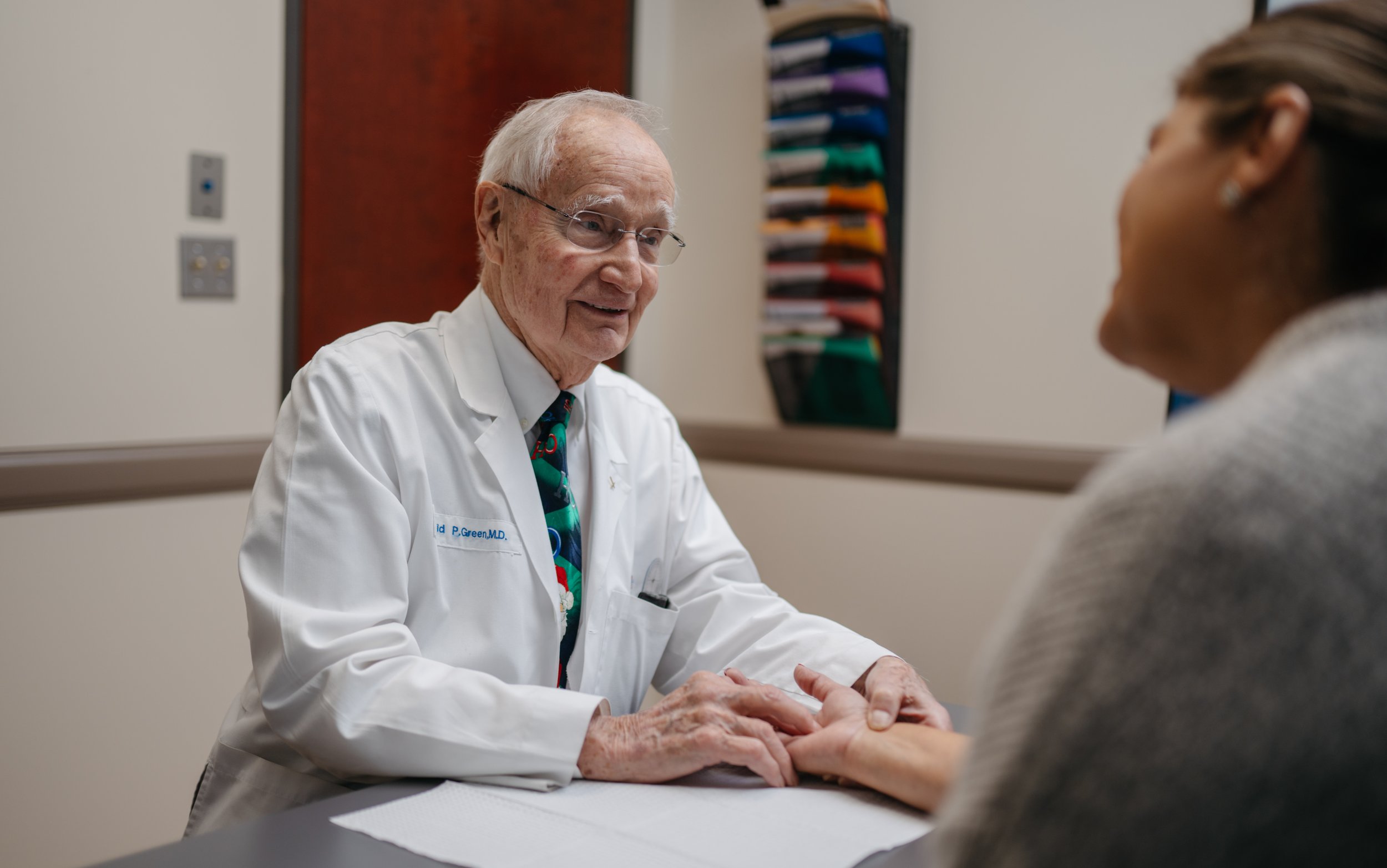

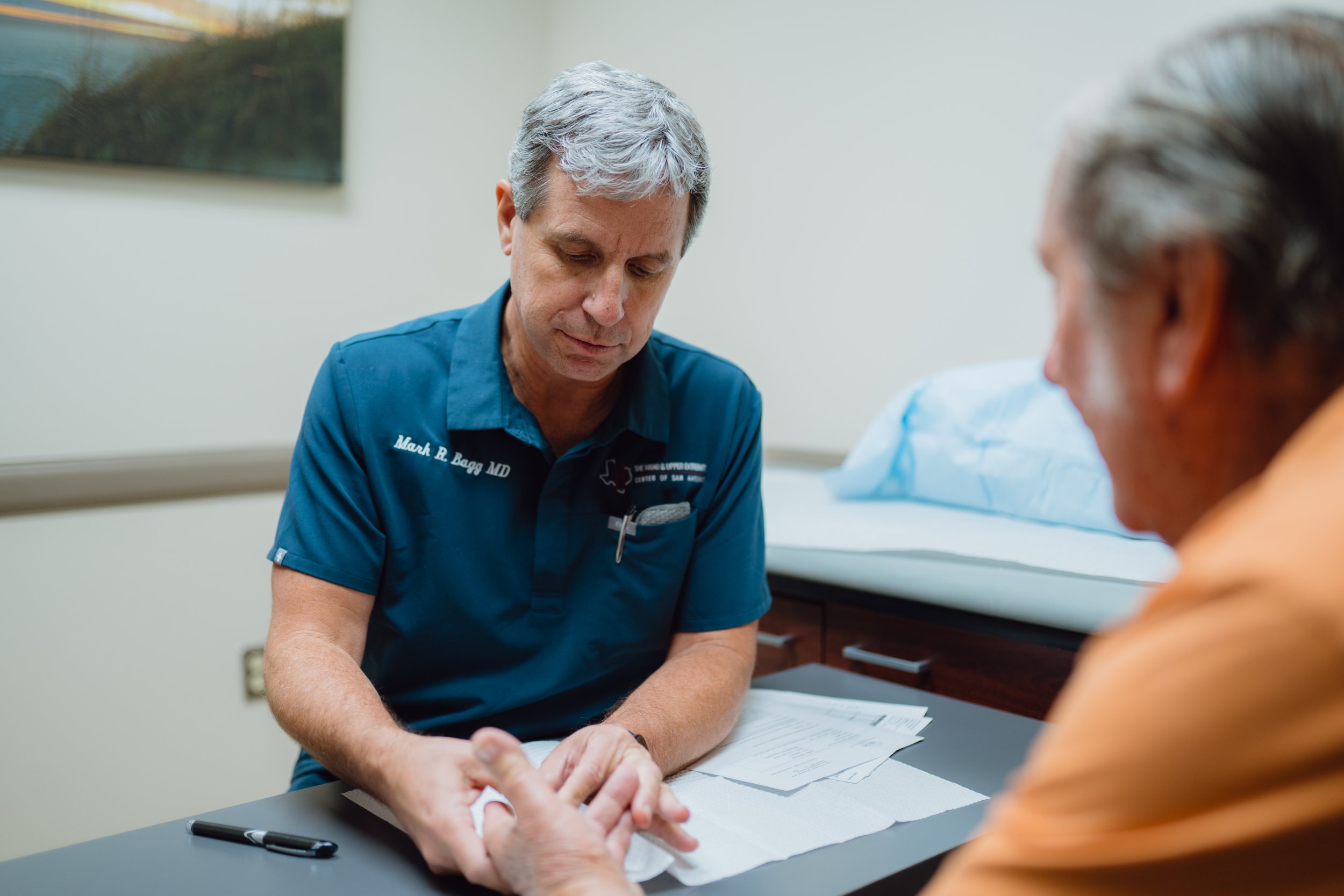
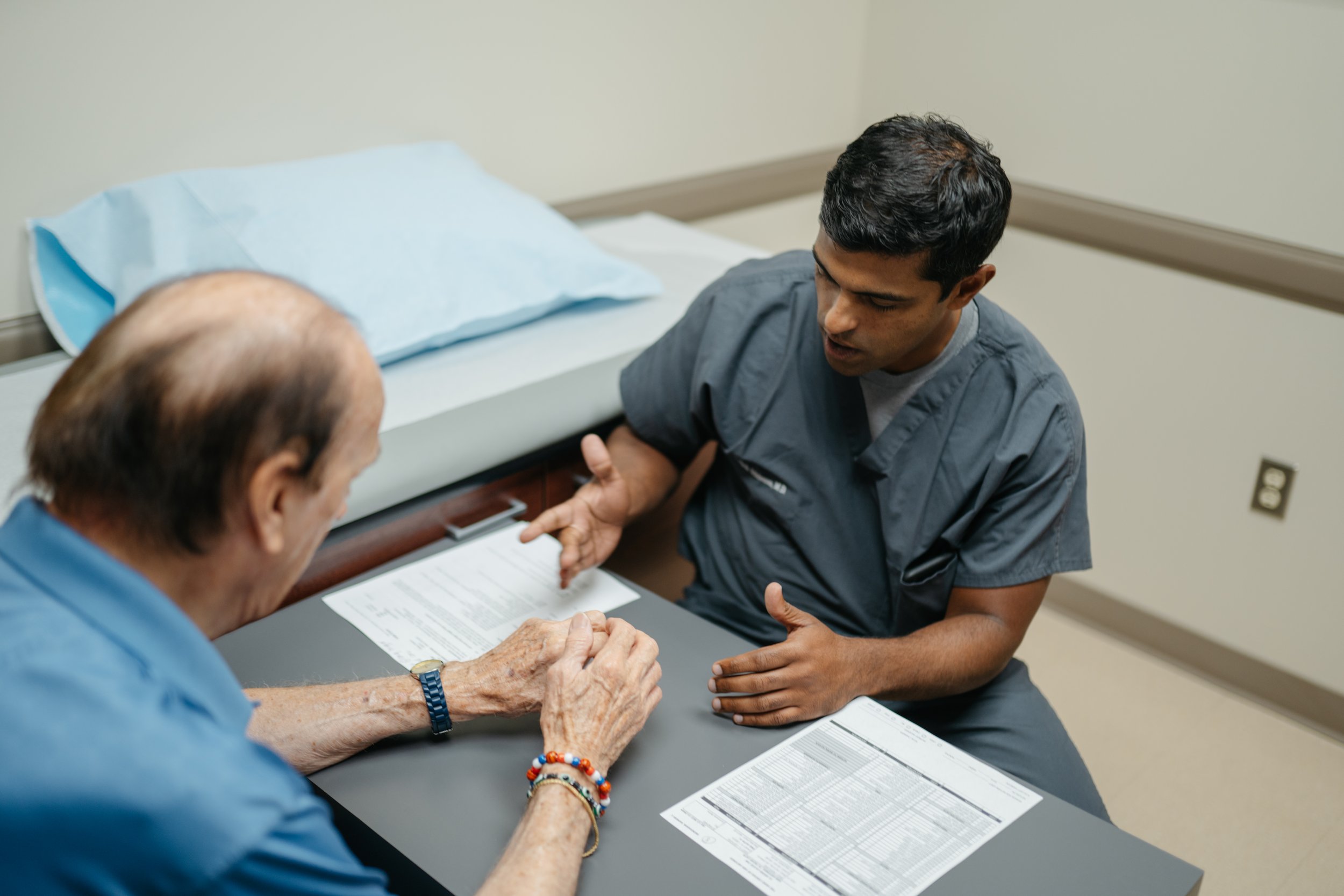

Why Choose The Hand & Upper Extremity Center of San Antonio for Dupuytren Contracture in the hand
When you choose the Hand & Upper Extremity Center of San Antonio for your Dupuytren contracture treatment, you’re choosing trusted experts dedicated to restoring your hand’s strength and mobility. Our board-certified surgeons and Certified Hand Therapists work together to provide advanced, personalized care for every patient. With decades of combined experience treating complex hand conditions, our team focuses on precision, safety, and lasting results. We’re committed to helping you regain comfort, confidence, and full use of your hand.
Meet Our Physicians
-

David P. Green, M.D.
-

Mark Bagg, M.D.
-

David W. Person, M.D., F.A.C.S.
-

Ramesh C. Srinivasan, M.D.
Flexor Tendon Laceration
OTHER HAND & WRIST RELATED ISSUES WE CAN HELP WITH
Did you know we offer in-house therapy?
Hand therapy is a merging of occupational and physical therapy theory and practice that combines comprehensive knowledge of the structure of the upper limb with function and activity. Using specialized skills in assessment, planning and treatment, hand therapists provide therapeutic interventions to prevent dysfunction, restore function and/or reverse the progression of pathology of the upper limb in order to enhance an individual’s ability to execute tasks and to participate fully in life situations.

